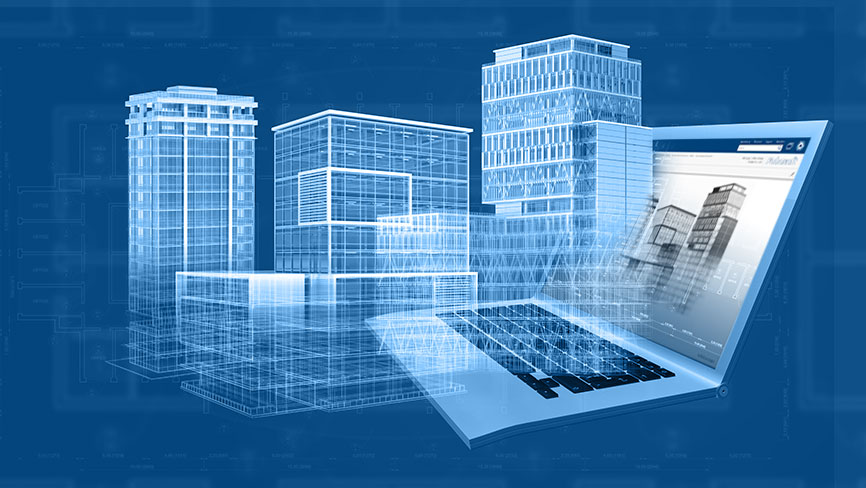In my article “Boost BIM project efficiency by working in the cloud,” I delved into the question of defining what Building Information Modeling (BIM) is and how this working method can be used to put construction projects on the fast track. In this article, I take a closer look at the dimensions 3D (three-dimensional object model), 4D (temporal planning data), and 5D (cost development) in the BIM model, as well as their relevance for major construction projects.
A holistic project approach with BIM
Building Information Modeling is a process that involves building and utilizing an intelligent model to inform project decisions. In combination with cloud-based document management solutions, BIM’s key advantages include transparency as well as early detection and rectification of any errors in planning.
By adding additional data dimensions, BIM provides a more comprehensive understanding of the construction project – such as how much a building will cost, when it will be completed, and how sustainable it will be in the future.
3D – the three-dimensional object model
This dimension comprises the process of creating graphical and non-graphical information and its use in a common data environment (CDE). For this purpose, a three-dimensional model – of an industrial plant, for instance – is generated, and this model is updated automatically throughout the entire project lifecycle, from conception to completion of the associated building.
Implementing a cloud-based document management solution lays the groundwork for efficient cross-company collaboration for everyone involved in the project. Since all of the data that is collected throughout the entire project lifecycle is stored in a central location in the cloud, problems that arise during later phases of construction can be addressed more rapidly.
4D – the construction project’s temporal planning data
The fourth dimension adds additional information to the three-dimensional BIM model in the form of time-based planning data. Accordingly, it supplements the previously created 3D objects with details such as the scheduled construction timeframe or the individual construction phases.
This enables everyone involved in a given project to simulate and visually depict the various phases of construction and the associated processes well in advance. As a result, the progress of the construction project can be mapped out transparently throughout the entire life of the project, and complex workflows can be planned more easily.
5D – the construction project’s cost development
The fifth dimension adds one crucial element to all of the preceding information – the cost. It gives project participants the opportunity to analyze the progress of the building activities in relation to their costs, and to visualize them over time. This means that even as early as the project preparation phase, it’s possible to plan the budget with precision and accuracy.
By comparing forecast and actual expenditures over the course of a construction project, any deviations in the building process can be identified at an early stage and countermeasures can be initiated as required.
Key takeaways and perspectives for the 6D and 7D dimensions
The 3D, 4D, and 5D BIM dimensions make it possible to create a three-dimensional model of the building, display its progress over the entire project duration, and visualize the associated cost development over time. Thanks to the BIM method, construction projects can be executed more expeditiously and, most importantly, more cost-effectively – assuming they’re based on a powerful, central cloud-based data environment like Approve on Fabasoft PROCECO.
In my next and final post on the topic of BIM, I’ll explain in greater detail the 6D and 7D dimensions, which address sustainability and facility management, and provide insight into the future of BIM.




